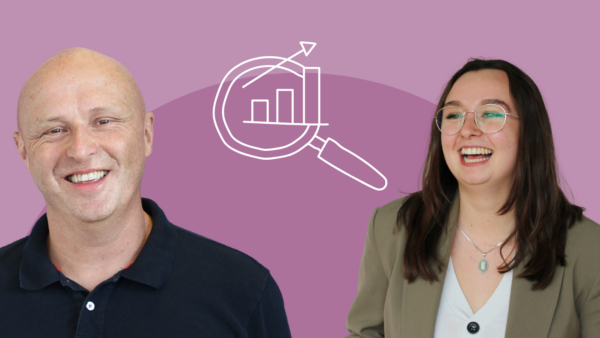Team agility is one of the core drivers of modern organisational success
Today’s organisations and teams need to be more agile than ever. With the rise of AI, the workforce is being asked to change and restructure at a high pace. Many projects and initiatives require cross-functional collaboration. And that means that people need to lead and team through influence, without hierarchy, or line of authority.
Many of our clients tell us about the challenges that this brings – the constant need to bring together new groups of people, quickly help them establish a purpose and goals, support them to deliver to those goals and then when the project’s over, disband the team and make space for the next one. Many workers will be part of more than one team, creating even more complexity particularly when team goals are competing for attention. It is no surprise then that a lack of engagement, a lack of accountability and ultimately, individual and team performance issues can show up in these projects.
How can you create agile, connected and effective teams?
So how should today’s organisations and leaders navigate this challenging context? At Strengthscope, our approach to team development supports teams on a journey towards effectiveness with our StrengthscopeTeam™ tool assessing behaviours across five developmental stages:
- Providing clarity of goals, roles and responsibilities for the team
- Awareness of where the team’s strengths and performance risks lie, so that the team can quickly build genuine, human connections
- Taking action so that team members can draw on each other’s strengths and ideas to reach clear decisions
- Developing agility to deal positively and proactively with change
- Celebrating the team’s achievements and taking action to review and stretch
For each of these stages to be completed, a team needs to build a specific set of habits. Looking at our most recent research findings (we used a sample of over 1,500 team members sampled across a variety of industries, functions, and countries over the past year) it appears there are three team habits that the most effective teams always report as being in place and they are:
- The team’s purpose is clear, meaningful and understood by all team members
- The team has clear, measurable goals and implementation plans to achieve its purpose
- The team is clear on each member’s role and expected contribution to the team’s goals.
All three of these team habits come from the first developmental stage, Clarity, and they provide a clear framework for any team wishing to achieve high levels of performance, including fast moving project or task teams. So our first piece of advice is to make sure that any new team is super clear on their purpose, their goals and the roles within the team. And keep these under review as the team and/or the project develops.
What are the positives within teams that we can build on?
We also know from our research findings that teams start from a default position of trust. The highest rated team habits across our sample are:
- Team members are able to share their ideas and views openly and honestly at team meetings
- Team members feel they can rely on each other for help and support to get the job done.
This is a real positive. What we’re saying is that in most teams, the default approach that team members take is to voice their views openly and assume that their colleagues will support them to complete their tasks. So as long as purpose, goals and roles are clear, the team will be comfortable moving to our second stage of team development – awareness – trusting that their colleagues will show up openly and authentically and will have their backs.
In strengths-based organisations where the strengths approach is common, it’s easier to build rapport, relationships and trust when a new project team is formed. That’s because the strengths language is universal and shared across everyone – it connects people and forms a basis for communication and effective collaboration.
And this translates into creating genuinely connected teams who understand each other’s very human qualities (strengths and risks) from the outset, increasing the chances of them delivering a high quality output first time.
What about picking team members with complementary strengths for project teams?
There’s another area that’s super interesting to explore with strengths when considering how to set up a project or task team for success. And it’s whether you have the right balance and blend of strengths within the team. Now it all depends on the team’s purpose and goals but there are two things that we know: 1. A team that is aware of its strengths and performance risks is better able to navigate a project nimbly and responsively, 2. Certain strengths may be more beneficial in certain team contexts.
For example, say you’re working in an engineering organisation and you need to develop a new product. You’re likely going to need a good chunk of execution strengths (to get things done), as well as some relational strengths (to make sure you’re consulting and collaborating within and outside the team) and some thinking strengths (to problem solve and to specify a quality end product).
Strength awareness creates the ‘gold’ in high performing teams
For a new project team, finding individual team members who can bring a solid blend of the right strengths is a good start. But it’s helping the team become aware of who brings which strengths (and where individual and team performance risks may lie) and how they prefer to use them, that provides the basis for genuine support, as well performance-improving feedback (on the positive and the negative). And we know that giving feedback to each other is amongst the lowest rated of all the team habits but that it is essential to effective team performance.
Say our product development team has an over-representation of results focus and initiative. If the team isn’t aware of those risks and they go into overdrive, there’s a chance that the product developed will be available super-quickly but it may not be to the correct specification, because not enough consideration has been given to stakeholders’ needs as most of the energy has gone into executing and not enough into consultation and planning. But when the team becomes conscious of this, they can make choices about who does what and when, to make sure that there’s enough stakeholder input, and that the specification is on point.
Our recommendation – help teams take the unconscious into consciousness
So much of team effectiveness and agility comes down to what each team member brings to the team individually as well as how the team dynamic works collectively. Teams that take that knowledge from unconscious to conscious are best placed to deliver on their objectives. And have more fun and energy while doing it. We recommend using a StrengthscopeTeam™ report at the beginning of each project, where the team is being formed and roles and responsibilities are being clarified. At Strengthscope, we offer this to organisations as part of our subscription model, it’s unlimited – and it’s ready to be used whenever there is a new project team. If you’d like to have a chat about this, let us know, we love a chat. Till next time, stay strong.













